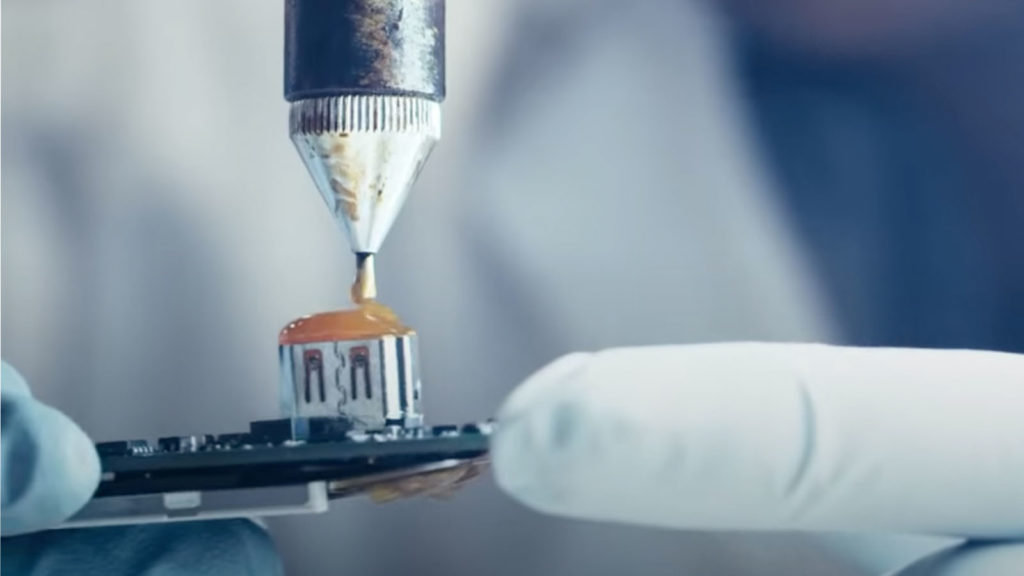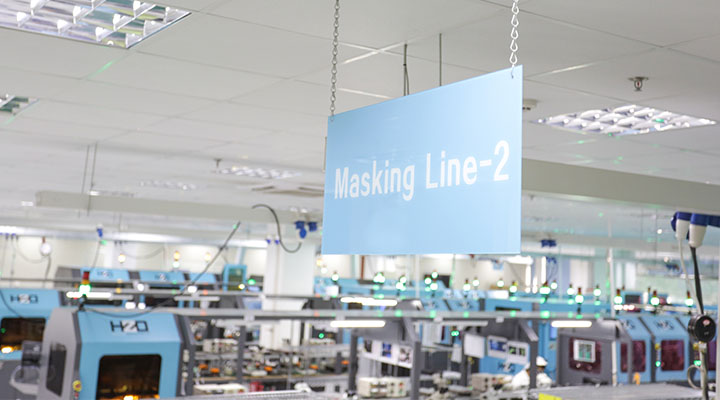Parylene Masking – General Concepts Explained
Do you need to produce a reliable electronic product? If you want to ensure your electronics will remain resilient throughout exposure to harsh environments, applying conformal coatings to PCBAs and other components may be your best bet. However, conformal coating protection can be too much of a good thing without processes to ensure certain areas remain coating-free.
When specific components are covered with these polymeric films, it can inhibit critical functions. Thankfully, the masking process resolves this issue so that you can benefit from conformal coatings without losing functionality.
What is Masking?
Masking is applying a temporary film, boot, tape, or plug to designated assembly components, preventing them from being coated. While the masking process is essential for conventional coatings such as acrylics, epoxies, urethanes, and silicones, Parylene has unique qualities that create a need to ensure that masking is done right.
Read about Parylene’s optical properties and Parylene biocompatibility.
Quick Introduction to Parylene Masking Techniques
For general guidance on conformal coating masking, the IPC-HDBK-830A handbook provides a good reference. However, because the coating process causes Parylene molecules to penetrate any surface area accessible to air, operators must ensure that all coating keep-out areas resist Parylene coating application, which requires domain expertise.
Read about Parylene C and Parylene N
HZO uses proprietary masking equipment and techniques our engineers build and customize for every project. However, a short description of general methods follows below.
Parylene masking techniques typically involve precisely sizing materials such as tapes, form-in-place gaskets, and boots to designated masked regions. After applying materials to the appropriate areas, a masking operator will allow peelable masking materials to dry before starting the CVD process, coating the entire component. After coating, the masking material is carefully removed.
Why Proper Masking for Parylene Coating is So Critical
Parylene’s exceptionally high dielectric strength requires you to be diligent about masking the right areas. A PCBA coated with Parylene would benefit from electrical insulation protection. However, if the connectors on that same PCBA get covered, you won’t be able to plug it in or make connections.
Learn about Parylene Temperature Range
Another reason you must get your Parylene masking process correct is its incredible conformality. Where Parylene is allowed to penetrate, pins and moving parts will be completely encapsulated. Although this cohesive and thorough presence of coating is typically considered a benefit, additional cost and labor to remove the Parylene from the keep-out areas will be required with incorrect masking implementation. In other words, it’s best to prevent instead of rework, which can be challenging due to Parylene’s strong chemical resistance properties.
Why It Can Also Be More Complicated
When you mask for Parylene application, the stakes are higher. Once it’s on, removing the coating will be a struggle without a knowledgeable partner with tools and techniques to make rework easier. The fact that masking for Parylene is also more complex, requiring more skill, raises further complications.
Without skill and experience, masking for Parylene is more challenging than general conformal coating masking due to the chemical vapor deposition process (CVD) used to apply the coating.
Learn about Parylene Thickness
Unlike conventional conformal coatings applied as liquids, Parylene is applied as a vapor, which means you are masking against a gas. Therefore, a much better barrier is required with the Parylene masking process, as vapor can more easily bypass masking materials.
Other masking considerations include:
- The need to validate if all components are hermetically sealed or not due to the vacuum nature of the CVD process
- Chamber maintenance
- Masking more than just keep-out locations may be required
- The need for specific fixturing
- Materials need to be thoroughly cured before coating and outgassing should be avoided
The list below includes components that in many cases should not be coated:
- MEMs
- Actuators
- Mating connectors and pins
- Test points needed prior to assembly
- Ground contacts
Parylene Coating With HZO
If you are masking for Parylene, you must implement the process correctly. Further, Parylene masking requires considerable expertise and experience to identify factors affecting masking success. These might include Parylene masking materials, the Parylene type, and the different areas that must be coated. Proper timing is also essential, as there is a relationship between the masking and coating processes. Any timing issues can impede coating quality. Managing electrostatic discharge is also a concern when masking.
Fortunately, our engineers have years of this experience, creating custom masking plans for customers with electronic products of all sizes, shapes, and functions. We have also developed industry-leading masking equipment that can automate and semi-automate the process for larger productions.
Reach out today if you would like a consultation to discuss why to use Parylene, our scalable Parylene coating equipment, or our automated masking processes that decrease Parylene coating costs.
Discover how HZO can protect your product


